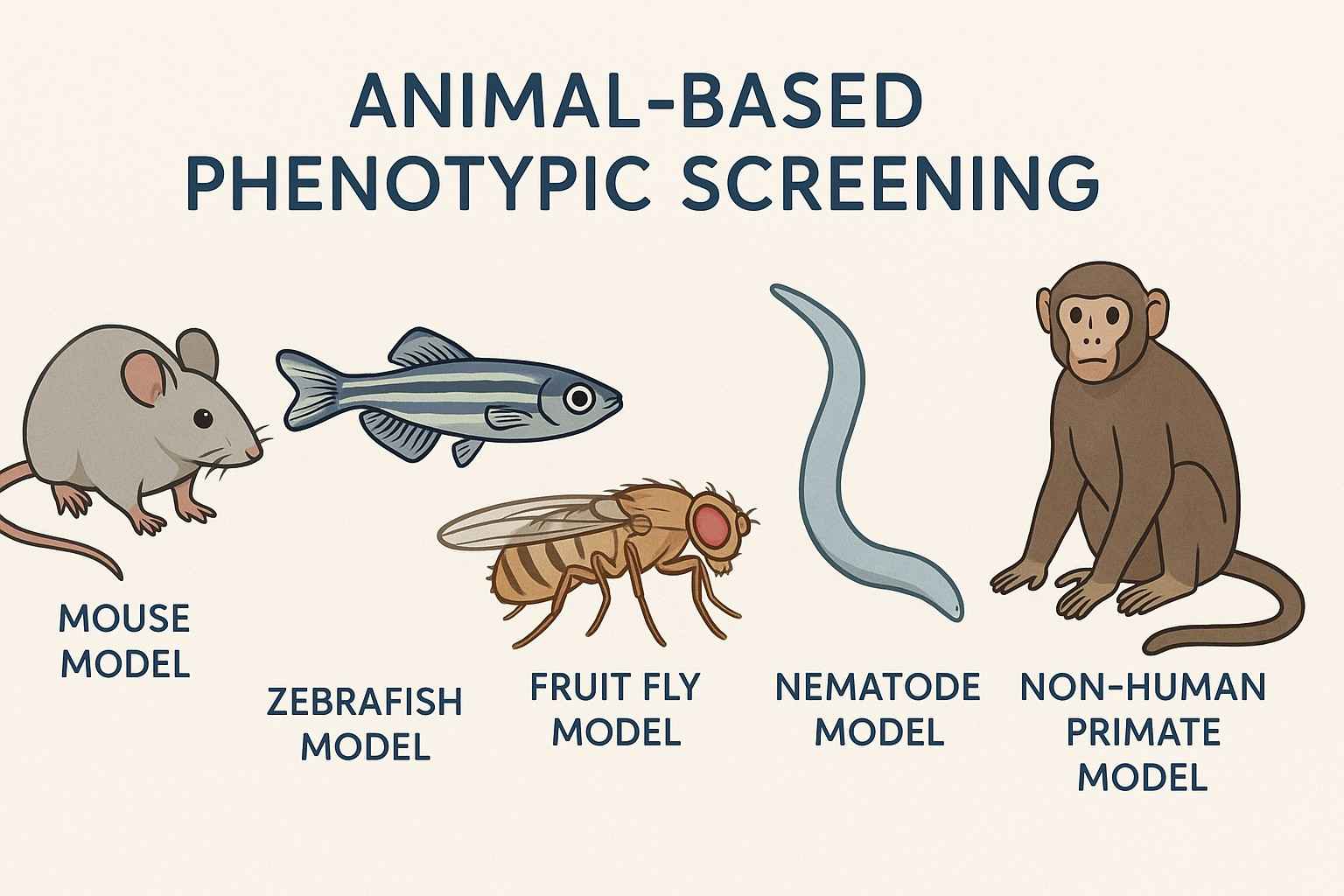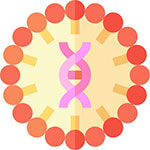Animal-Based Phenotypic Screening
INQUIRYBOC Sciences, with its abundant animal model resources and professional technical team, provides efficient and precise animal-based phenotypic screening services. We cover various disease models, including neurological disorders, tumors, metabolic and immune diseases, to meet diverse R&D needs. Through rigorous experimental design, standardized dosing regimens, and multidimensional phenotypic monitoring, we ensure data are scientifically reliable and highly clinically relevant. Combined with advanced data analysis and customized reporting, we help clients accelerate drug development processes. Our services strictly comply with ethical and GLP standards, committed to providing trustworthy in vivo screening solutions for global biopharmaceutical companies and supporting the successful development of innovative drugs.

Service Highlights and Advantages
- Multiple animal models available: covering over 20 models including mice and zebrafish, meeting diverse disease research needs.
- High-throughput screening capability: automated systems support over 30 animal experiment groups per day, improving R&D efficiency.
- Precise behavioral monitoring: utilizing automatic video analysis systems with detection accuracy above 95%.
- Broad disease model coverage: establishing over 50 disease models such as tumors, inflammation, metabolic diseases, aligned with clinical demands.
- Real-time data tracking system: equipped with RFID and cloud analysis platforms, enabling real-time upload and visualization of animal data.
- Experienced technical team: core researchers all have more than 10 years of animal experiment experience, ensuring experimental reliability.
High-standard Animal-Based Phenotypic Screening Services
BOC Sciences is equipped with a series of automated, quantitative, and reproducible phenotypic detection platforms. Through systematic and multidimensional evaluation methods, we not only focus on the drug's impact on overall animal status but also deeply explore phenotypic changes at molecular, cellular, and tissue levels, thereby achieving precise validation of efficacy and mechanisms.
Behavioral Detection Platforms
- Video tracking systems (Open Field Test, Maze Test)
- Spontaneous activity, forced swim test, tail suspension test (depression/anxiety)
- Cognition and memory evaluation (Morris water maze, Y-maze)
- Social behavior tests (autism models)
Physiological and Imaging Monitoring
- Heart rate, blood pressure, body temperature, respiratory rate
- In vivo fluorescence/bioluminescence imaging (e.g., tumor burden assessment)
- Miniature MRI, PET-CT (provided in cooperation with partner platforms)
Histopathological Analysis
- HE staining, TUNEL apoptosis detection, immunohistochemistry
- Multi-label confocal imaging
- Animal organ function evaluation (e.g., liver and kidney function indicators, blood routine)
Preliminary Molecular Mechanism Analysis (optional)
- RNA expression profiling (qPCR, RNA-seq)
- Protein expression profiling (Western blot, ELISA, IHC)
- Pathway analysis and preliminary target attribution
Do You Need A Consultation?
BOC Sciences integrates innovative technologies to empower your drug discovery with strong momentum, fully dedicated to building next-generation drug screening platforms.
Extensive Disease Models from BOC Sciences
BOC Sciences provides a wide range of disease models covering neurological, cancer, metabolic, autoimmune, cardiovascular, rare, and genetic diseases. These models are developed for high physiological relevance and reproducibility, supporting accurate drug evaluation and disease research tailored to diverse scientific needs.
| Model Category | Disease Examples | Service Description |
|---|---|---|
| Neurological Disease Models | Depression, Anxiety, Alzheimer's, Parkinson's, Autism Spectrum Disorder | Includes cognitive impairment, motor dysfunction, and psychiatric disorder models, supporting drug behavioral and neurophysiological evaluation. |
| Tumor Models | Subcutaneous xenograft, orthotopic tumors, spontaneous models, humanized tumor models | Covers multiple tumor types, suitable for efficacy, drug resistance, and immunotherapy research. |
| Metabolic Disease Models | Obesity, hyperlipidemia, type 2 diabetes, fatty liver | Simulate metabolic disorders, supporting efficacy and safety evaluation of metabolic disease drugs. |
| Autoimmune Disease Models | Rheumatoid arthritis, inflammatory bowel disease, multiple sclerosis | Reflect autoimmune disorder mechanisms, suitable for anti-inflammatory and immunomodulatory drug screening. |
| Cardiovascular Disease Models | Hypertension, myocardial infarction, atherosclerosis | Reflect heart and vascular pathology, supporting cardiovascular drug safety and efficacy studies. |
| Rare and Genetic Disease Models | CRISPR-constructed specific mutants | Construct specific models for rare and genetic diseases, supporting precision medicine R&D. |
| Respiratory Disease Models | Asthma, chronic obstructive pulmonary disease (COPD) | Suitable for evaluating respiratory drugs' anti-inflammatory and lung function improvement effects. |
| Liver and Kidney Disease Models | Liver fibrosis, liver injury, renal failure | Simulate liver and kidney function damage, supporting efficacy and toxicology studies of related drugs. |
| Infectious Disease Models | Bacterial infection, viral infection | Used for anti-infective drug screening and vaccine efficacy evaluation. |
Diverse Animal Model from BOC Sciences
BOC Sciences offers various animal models across species and genetic backgrounds, including CRISPR, transgenic, and knockout models. This diversity enables precise disease simulation and preclinical testing, improving translational relevance and accelerating drug discovery.
| Model | Features | Application Areas |
|---|---|---|
| Mouse | Easy genetic manipulation, clear phenotypes | Cancer, immunology, metabolism, neurological diseases |
| Zebrafish | Transparent body, high-throughput screening, rapid development | Toxicity screening, neuro/cardiovascular development, drug permeability |
| Drosophila (fruit fly) | Clear genetic background, short lifecycle | Neurodegenerative diseases, developmental regulation |
| C. elegans (nematode) | Clearly labeled neurons, short lifespan | Lifespan screening, neurological function research |
| Non-human primates | High similarity to humans, but costly | Advanced efficacy validation, toxicology studies |
Project Workflow

Customer Requirement Communication
At the early stage of the project, BOC Sciences conducts in-depth communication with customers to thoroughly understand their research goals, including disease focus, characteristics of candidate compounds, screening targets, and animal model preferences. This ensures that the project design closely aligns with customer needs and establishes reasonable expectations and technical routes for subsequent experiments.

Model Selection and Experimental Design
Based on the customer's research direction and compound type, the expert team at BOC Sciences recommends the most suitable animal models and designs scientific and feasible experimental protocols. They clarify the setup of experimental groups, sample size arrangements, observation indicators, and study duration to ensure a balance between experimental efficiency and data quality.

Candidate Drug Handling
Before animal testing, candidate drugs undergo processing, including the scientific design of dosage gradients and optimization of administration methods such as oral, intraperitoneal, or intravenous injection. This ensures that drug distribution and action in the model animals closely mimic clinical application scenarios.

Phenotypic Data Collection
Using standardized experimental platforms, multidimensional phenotypic data are systematically collected, including behavioral performance, histopathological changes, imaging features, and molecular markers. This guarantees comprehensive and reproducible data collection, laying a solid foundation for subsequent analysis.

Data Analysis and Summary
The collected phenotypic data are subjected to systematic statistical and visualization analyses. Complete data reports and technical summaries are generated to preliminarily elucidate drug mechanisms, providing customers with decision-making support and recommendations for further research directions, thereby enhancing data application value.

Follow-up Validation and Development (Optional)
According to customer needs, one-stop extended services are provided, including hit validation, dose optimization, pharmacokinetics/pharmacodynamics (PK/PD) analysis, toxicity assessment, and potential target exploration, accelerating the drug screening process and early-stage research translation efficiency.
Applications
New Drug Discovery and Lead Compound Screening
Animal-based phenotypic screening can identify lead compounds with therapeutic potential without fully relying on target mechanisms. It is particularly suitable for complex diseases such as central nervous system disorders and metabolic dysregulation, aiding the discovery of novel drug candidates with unique mechanisms of action.
Disease Mechanism Research and Target Validation
By establishing disease-related animal models, phenotypic screening can reveal the drug's impact on disease progression and reverse-infer potential targets, supporting disease mechanism studies and target validation, thereby enhancing the integration of basic research and drug development.
Efficacy and Toxicity Evaluation
In early drug development, animal phenotypic screening is used to assess candidate drugs' efficacy within the overall physiological environment and potential toxic side effects, providing systematic safety information to lay the groundwork for subsequent preclinical studies and reduce development risks.
Rare Disease and Personalized Treatment Research
In rare diseases and personalized medicine, small animal models with specific genetic backgrounds or induced mutations enable targeted phenotypic screening to discover therapies suitable for specific patient groups, promoting precision medicine and orphan drug development.
FAQs
What is animal-based phenotypic screening?
Animal-based phenotypic screening is a method that evaluates the impact of drugs on disease phenotypes within whole animal models to identify candidate molecules with therapeutic efficacy and drug development potential. It realistically reflects the integrated effects of drugs in vivo.
What types of animal models does BOC Sciences provide?
We have established an extensive disease model library, including models for neurological diseases, tumors, metabolic diseases, autoimmune diseases, cardiovascular diseases, as well as rare and genetic diseases. We also support CRISPR-customized model construction.
Do you support custom disease model development for clients?
Yes. We can build customized models according to client research goals through induction, transgenics, gene knockout/knockin, and other techniques to meet specific target or mechanism research needs.
What endpoints can phenotypic screening evaluate?
Endpoints can include behavioral performance, physiological parameters, biochemical markers, inflammation levels, histopathology, and molecular expression. Specific indicators are personalized based on model type and research objectives.
Do you support multiple administration routes?
Yes. We support oral, intravenous, intraperitoneal, local administration, and other methods to ensure alignment with actual clinical pathways or drug characteristics.
Can you provide multi-dose and multiple time-point designs?
Certainly. We can design experimental protocols with multiple doses and time points to evaluate dose-dependency, duration of drug effect, and optimal therapeutic windows.
Online Inquiry

